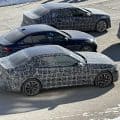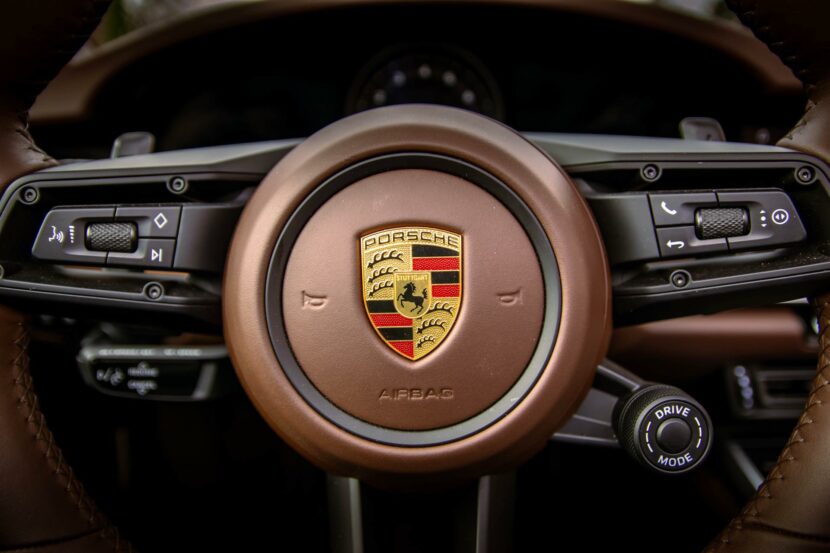In May of 1922 the restrictions on aircraft engine production, imposed by the Treaty of Versailles, was lifted. Possibly this serves as one of the reasons BMW’s secretive benefactor, Camillo Castiglioni, went to the trouble of purchasing the all-but-dead Bayerische Flugzeugwerke and prying the name, personnel, and products of BMW from Knorr-Bremse. This was BMW’s crabwalk into the future.
It is worth noting that Germany was undergoing a period of rapid currency inflation at this time. And Castiglioni was in a position to benefit from it – he made money from his sale of BMW in 1919. And even though he paid a higher price, in Reich marks, for the resurrected BMW, he had moved the proceeds from the 1919 sale to safe currencies – and paid for the 1922 purchase in inflated currency. That was the beauty (or deviltry, if you will) of Castiglioni’s operations.
The operations of the reanimated BMW consisted of the few permanent buildings leftover from BFW and numerous test sheds. There was a lot of work (and capital) still required to build a functioning manufacturing facility, and sales would need to provide for that.
From May 1922 BMW had the opportunity to begin building again its superlative high altitude BMW IIIa engine for sale. However, they were not rolling in riches, they were just barely scraping by on their reputation, selling a few motorcycle engines and M4A1 truck/marine/stationary engines. The dream was of aviation – not 2 wheels or 4 wheels, and yet BMW had to make ends meet in the interim and to provide for a future.
Before the imposition of the treaty bans, BMW had created variants of the IIIa engine, and had drawn plans for more. It was a variant of the IIIa, the IV, that had set the unrecognized altitude record. That was a starting point. And from there the IIIa and IV were sold, as well as a smaller capacity IIIa designated as a Type II due to its performance specifications. But the IIIa & IV were the bread and butter and hope for the future.
And that future involved foreign sales – including to the Soviet Union, which had only recently emerged from a civil war and was eager to move forward technologically (and whether via espionage or purchase was no matter – a BMW employee was reported to have copied thousands of drawings for a group known as the ‘United Settlers of the East’ a soviet ‘front’ organization). And Castiglioni had a hand in those sales, in fact two hands, he received both dividends and commissions – and that double dipping in company revenues would eventually catch him out and find him sidelined by the board of directors.
But the aero engines were the way forward and along with the core of BMW’s personnel, plucked from Knorr-Bremse, the BMW IIIa was placed on an evolutionary path. The IIIa and IV – a 250 bhp 23 litre engine – paved the way for further development of inline and V based aero engines. The common features of the BMW engines were single overhead camshaft, separate crankcase, and individual cylinders.
The earthbound M4A1 is an elementally pretty engine – built much like its aero siblings, it sported a SOHC design, with cross flow induction/exhaust. Its cylinders were arranged in pairs and the whole engine was assembled like a good watch. Nothing technically ‘out there’, but finished to a fare-thee-well. Its a pity that it wasn’t a sales sensation. But given the period – the continual crisis of government and inflation – it is not remarkable that it didn’t sell well.
BMW also inherited the BFW Helios motorcycle that they were providing engines for – but not much was thought of the Helios. There were a number of issues with the relatively crude motorcycle and thanks to staff (and new faces in staff) the challenges of building a good motorcycle were taken on.
Building a frame commensurate with the capabilities of the engine, BMW produced the R32 – and, given the fact that motorcycle sales outpaced car sales at this time in Germany, it was the way to make money during the uncertain economic times.
The R32 mounted its boxer engine transversely in the frame and it eschewed chain drive for a shaft drive. Those two changes produced a more comfortable and reliable motorcycle. And then BMW continued to improve – and to aid sales, race. The motorcycles were raced in national and international events and, thanks to the skill and precision with which the BMW motorcycles were built, they were successful.
The evolution of the BMW motorcycle continued throughout the 1920s and led to sports models, the R 37 and R 47. Ernst Henne became a works rider for BMW and proceeded to burnish the image of BMW motorcycles.
Germany had a higher percent of per capita ownership of motorcycles relative to the ownership of cars in the 1920s and the automobile industry in Germany during the 1920s was buffeted by inflation and lack of sales. But BMW was aware that automobile sales may eventually take off, so they experimented with automobiles.
In specific they hired Gotthilf Dürrwächter to design a series of cars. BMW in 1925 studied an internal proposal from Dürrwächter for a longitudinally mounted V8 front wheel drive vehicle, Type F 50. There was also the F 55 prototype which utilized a transversely mounted four cylinder engine. And then, in 1928, there was a six cylinder F 65 prototype – of which a completed, production like, example existed – now preserved only in photographs.
Additionally, thought was given to producing the Schwäbische Hüttenwerke (SHW) of 1925, which Wunibald Kamm was associated with – there were three SHW research vehicles, one of which still exists and is on display in the Deutsche Museum in Munich. The SHW used a large boxer motor (1000+ cc) mounted in a monocoque chassis, and a tricky – probably marginally effective – front wheel drive setup.
But none of those cars, regardless of their avant garde technical specifications, were ready for series production – they were ahead of their time, and would have resulted in untold misery to BMW if they had been built and sold to the public.
While BMW was exploring the eccentricities of front wheel drive, Herbert Austin was building the Austin 7 small car in England. This was a right sized vehicle for the times, and quite readily produced for a profit.
The Austin 7 was licensed for production in a number of markets and in Germany the Fahrzeugfabrik Eisenach, which was looking for a product, any product, that could ensure their future, started building the licensed German version of the Austin 7 as the Dixi 3/15 in 1927. However, the owner of the Fahrzeugfabrik Eisenach was overextended and a friend offered to purchase the concern. That friend was Camillo Castiglioni – of BMW fame.








































































